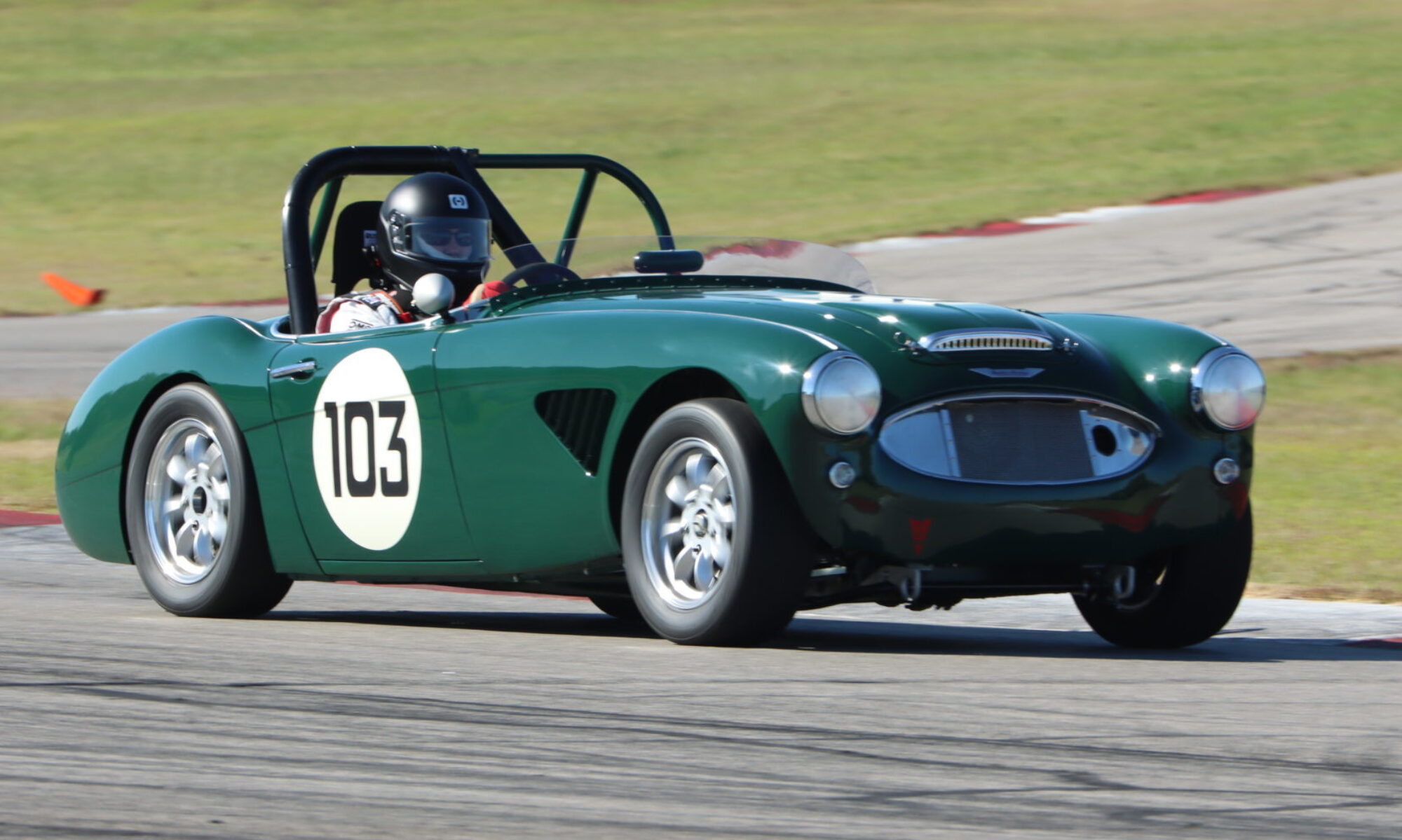One of the eternal questions that floats throughout the paddock is “What camber should my car have?” Even within the big Healey community there are nearly as many different answers to this question as there are people who set up big Healeys. Some of the answers seemed to be informed by folklore, as if the information was cast upon us late at night by a spirit figure. Some of the answers seemed to be informed by experience. Other opinions were just being passed on by other racers. None of this instilled a great deal of confidence in my desire to find “the camber” setting, so I set out on this little journey.
What Are We Doing? Why Are We Doing This?
Why do all this…well, to go around corners faster and have lower lap times. Practically, we want to have the face of a tire (fronts only in our case because we cannot adjust the rears) evenly contact the track surface in a corner because this will allow for the greatest contact patch size between the tire and track, thus allowing the greatest g-force and speed around a corner. If an outside tire has too little negative camber in a corner, it is primarily using the outside edge of the tire. If the outside tire has too much negative camber in a corner, it is primarily using the inside edge of the tire. The objective is to use a camber setting that results in an equal amount of use across the tire face. Think Goldilocks…not too much, not too little.
There are plenty of ways to examine this including:
- Setting camber, running some laps, and seeing what the effect is on g-force, speed, and/or lap times…but track time can be expensive.
- Simply looking at tire wear from session to session and hoping to see some informative wear patterns…again, more track time and this isn’t very precise.
- Stick a tire pyrometer into (or use an infrared tire temp gun) the outside edge, inside edge, and middle of a tire as soon as possible after a vehicle exits a track. The challenge here is that the temps across the face of a tire can change rapidly and be quite different by the time measurements are taken.
- Collect data using infrared sensors on the inside of tires (yes, inside the tire) during a session. This results in real-time data that can be coordinated with track location (e.g., straight, corner entry) but WOW, this is spendy.
What Are We Doing? Why Are We Doing This? Part II…The Bonus
An added benefit to measuring tire temperature at three locations across the face of the tire is the ability to determine if a tire is over or under inflated. This can be done by comparing how different a middle temperature reading is from an average of the outside and inside temperature readings. For example, if the middle is hotter than the outside/inside, the tire likely has too much air pressure.
The Solution…Infrared Tire Temp Sensors
I decided to use three infrared tire temperature sensors with one aimed at the outside edge, one at the middle, and one at the inside edge of a tire. The assembly is mounted to hub so that the IR sensors are always at the same distance from the tire and move with the tire (hub) as I turn the steering wheel and as the wheel moves up and down over the track.
These sensors are relatively inexpensive and are connected to my data system so that I get real time data. It is important to note that no approach is perfect. Tire surface temperature changes fast which may obfuscate true temperature readings, but this was the approach that best balanced cost, convenience, and ability to answer my main question.





Caveats
Of course there are a few caveats. First, while my measurements may help you out to some degree, I would encourage a bit of caution in applying my results to your car because there are many factors that may impact tire temperatures, how they change, how stable they are, etc. My results may only be applicable to my racecar.
Second, it may be that even if the process is followed by which we adjust camber and tire pressure to get a consistent reading across the contact patch of the tire during a corner, this may not be a camber that is perfect for a car. Racing is all about compromises and an optimal setting for one type of corner may not be the best setting for the rest of a track, or even a driver.
At this stage I have been gathering and reading documents that can help inform the direction of the investigation (see some below but also see Jorge Segers book “Analysis Techniques for Racecar Data Acquisition”), mounting the IR sensors, and setting up the math channels and graphs in Race Studio 3. In May I will be collecting data while on track.
Supporting Docs
